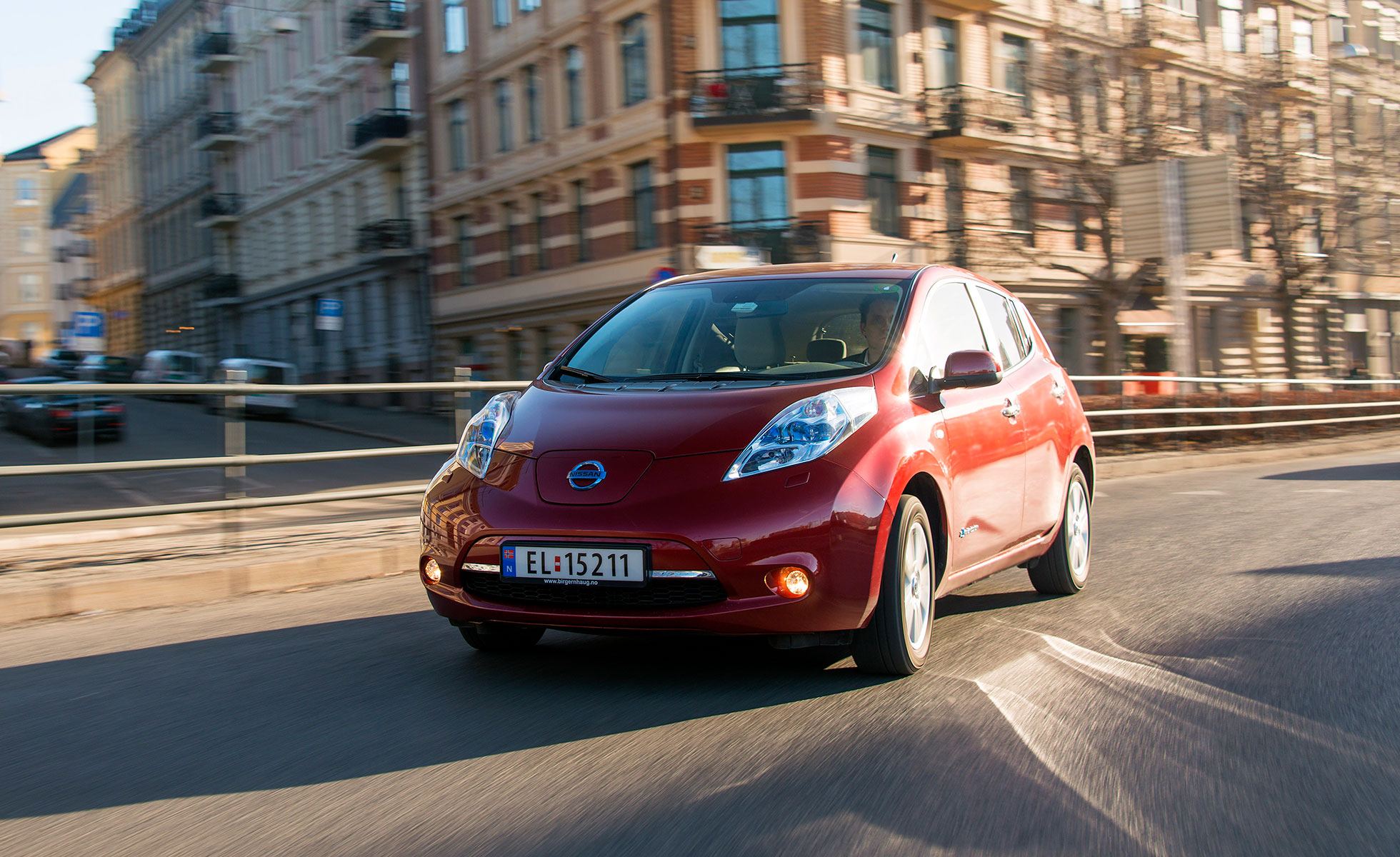
Norwegian EV owners enjoy incentives such as reduced tolls, bus-lane access and free parking and ferry rides. (Photo: Norsk Elbilforening via Flickr)
Electric vehicles won’t save us from runaway climate change, but they’re part of the solution, along with support for public transit and active transport like walking and cycling. The transportation sector accounts for almost one-quarter of the world’s carbon emissions, so it’s an area where change is necessary and possible.
As Norway and other countries are demonstrating, incentives and tax policy can move people quickly into cleaner vehicle options. Half of Norway’s cars are expected to be electric this year, and it’s on track to meet its commitment to have only zero-emissions cars sold by 2025. Its strong EV mandate, inexpensive hydropower, tax incentives and price parity with internal combustion engine vehicles contributed to this success.
Reduced tolls, bus-lane access and free parking and ferry rides sweetened the option for Norwegians. Only four per cent of the country’s EV owners say they would go back to conventional cars.
Norway is ahead of much of the world, but electric vehicles are on track to reach more than half of global new car sales by 2040. Government policies have driven this shift. The Norwegian government offered about US$1 billion in incentives this year, including waiving high vehicle import duties and taxes for electric car buyers. The government plans to phase these out in 2021, gradually replacing them with higher taxes on fossil-fuelled vehicles.
China used government incentives to increase EV production last year by 50 per cent over the previous year, and built the world’s first fully electric bus fleet in Shenzhen. India has a US$1.4 billion, three-year subsidy plan to jump-start electric and hybrid vehicle sales.
Electric vehicles are on track to reach more than half of global new car sales by 2040. Government policies have driven this shift.
Although Canada isn’t embracing the full policy package needed for significant behavioural change, it’s making progress, with commitments to reach 100 per cent zero-emission vehicle sales by 2040, and 2025 and 2030 targets coming. But it’s a long road ahead. Just 2.5 per cent of total vehicle sales last year were electrics. Federal rebates implemented in May should boost electric vehicle sales, but we need mandatory targets.
Provincially, B.C. and Quebec are echoing California, which in 1990 became the first place to set up a zero-emission vehicle standard. One of 10 new vehicles purchased there last year were EVs. Quebec’s mandate sets a target for one-third of all new vehicles sales to be EV by 2030. B.C.’s mandate, expected to become law soon, requires that all new light-duty car and truck sales be zero-emission by 2040. That could play a big role in helping B.C. meet its transportation climate targets.
Municipalities and provinces can help prepare for the EV transition by building more public charging infrastructure and requiring new residential buildings to install chargers or be electric-vehicle friendly. Other ways to lower transportation emissions include cleaning up the electricity used to charge EVs and reducing the carbon content of fuels for non-electric vehicles with biofuels or hydrogen produced from renewables.
Although Canada isn’t embracing the full policy package needed for significant behavioural change, it’s making progress … Federal rebates implemented in May should boost electric vehicle sales, but we need mandatory targets.
Even without government interventions, electric vehicles may cost less than gas-powered cars by 2024, according to Bank of America Merrill Lynch analysts. Add lower operating and maintenance costs and savings from forgoing high-priced gas, and there are many incentives to switch. Hydro-Québec’s online calculator estimates it costs $10.65 to drive a gas-fuelled compact car 100 kilometres and $2.10 for an electric.
EV travel range continues to increase and they’re performing well in cold weather. Electric motors are also efficient, whereas internal combustion engines waste much of the energy as heat. Used EV batteries are finding new lives in energy storage, and researchers are investigating how to make the lithium supply chain, from extraction to recovery, a model of the circular economy.
Despite their appeal, single occupancy electric vehicles don’t address congestion in growing urban areas or the amount of valuable space parking consumes. Investments in active transportation and transit infrastructure promote healthier lives and livable urban environments. Shared high-speed, non-polluting transit remains the gold standard for livability, equity and health. Committed federal funding for transit is essential to create the kind of resilient communities climate change demands.
A recent study shows Canada’s climate is warming at twice the global rate and that to prevent environmental catastrophe, human behaviour must change. Canada would be wise to emulate Norway and other countries and speed up its transition to a low- to no-carbon future.



